2025 Frieding (Germany) formation
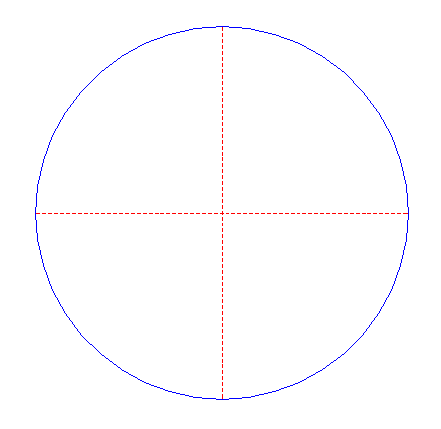
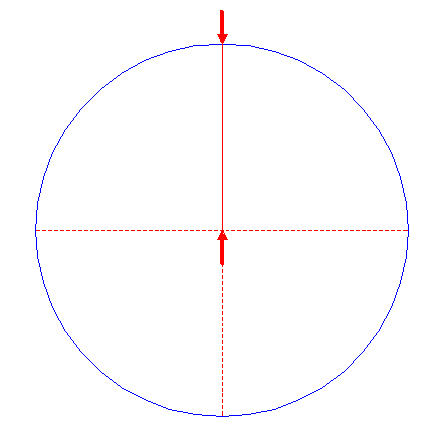

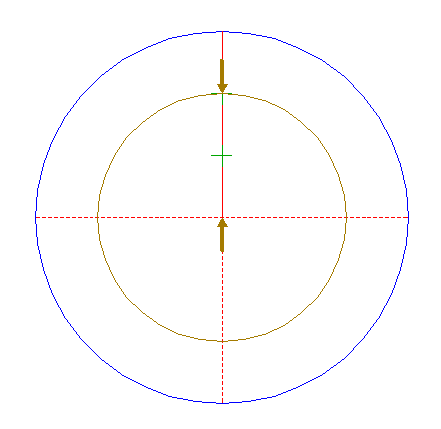
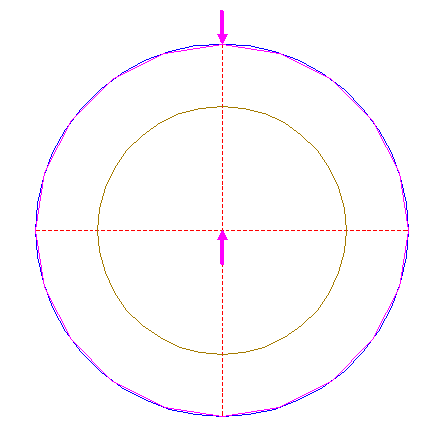
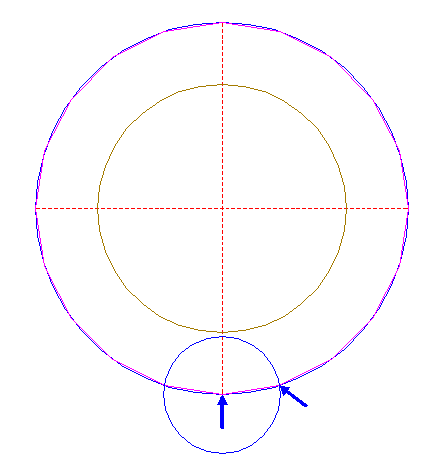

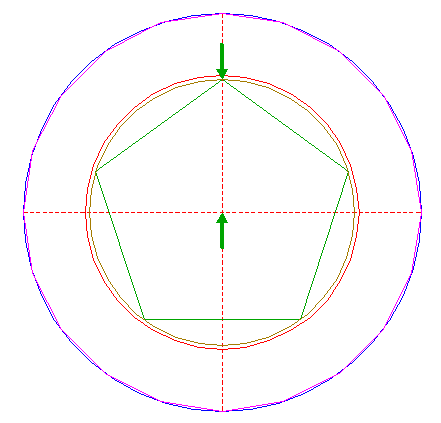

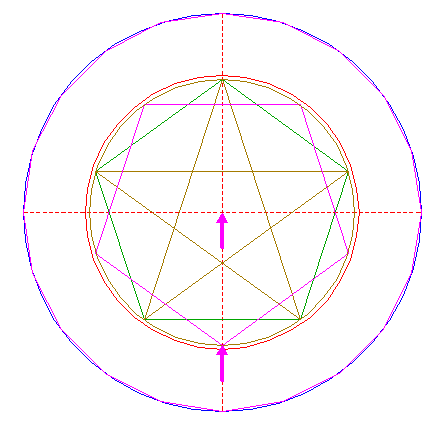
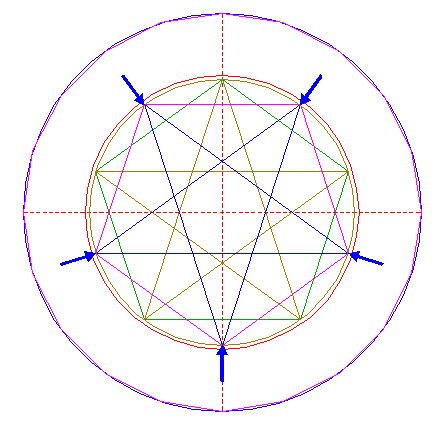
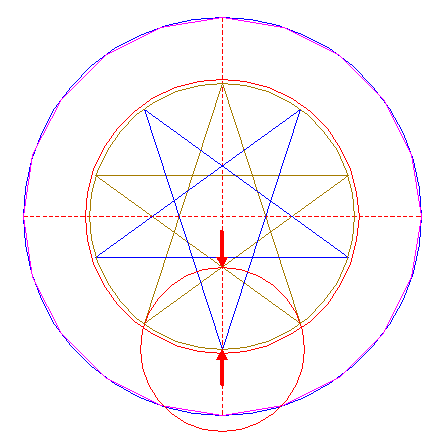



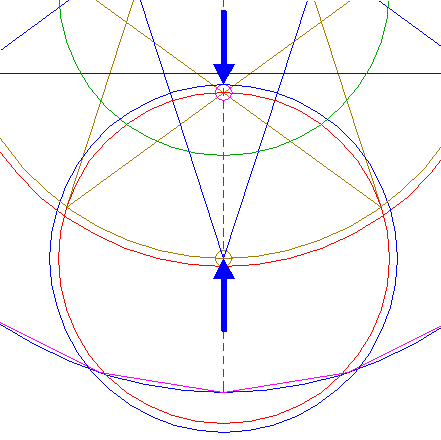
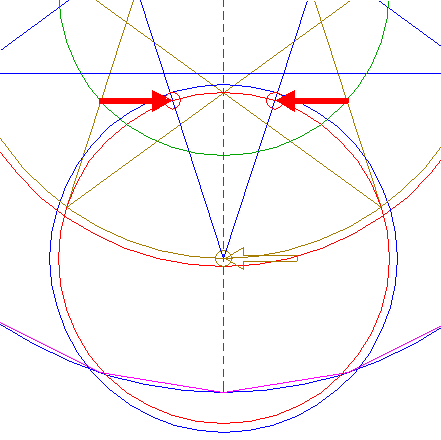
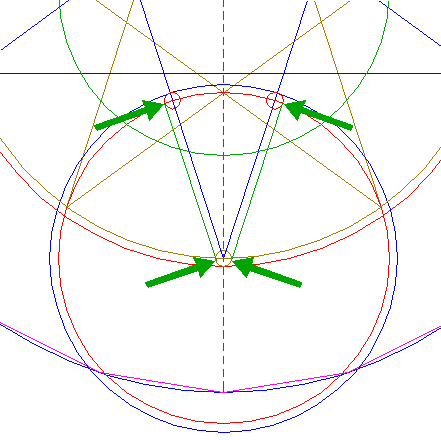
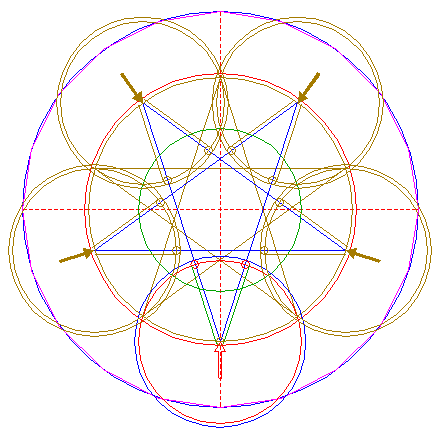
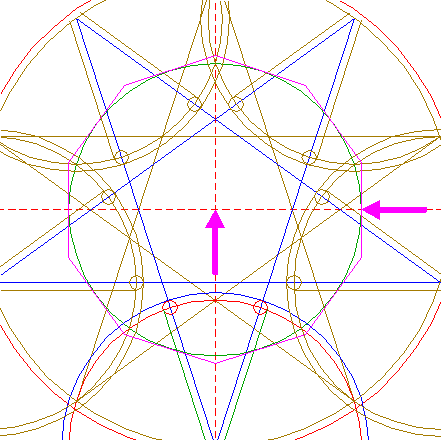
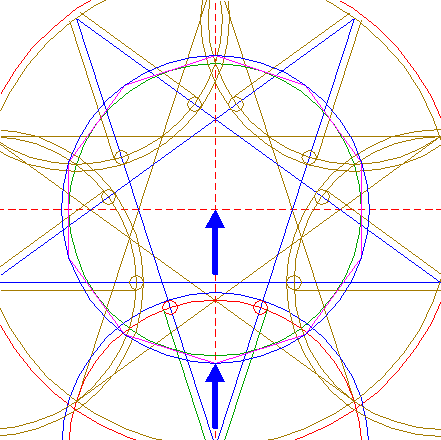
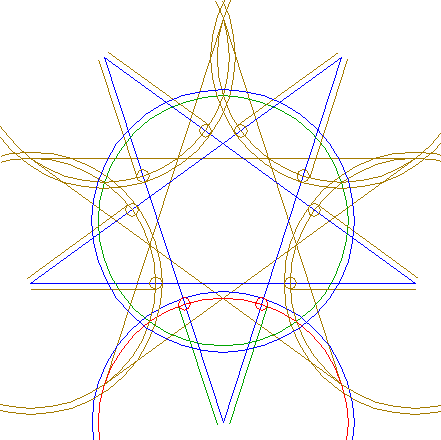
...this pattern remains.
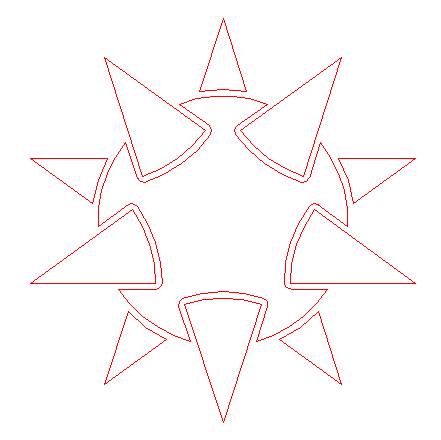

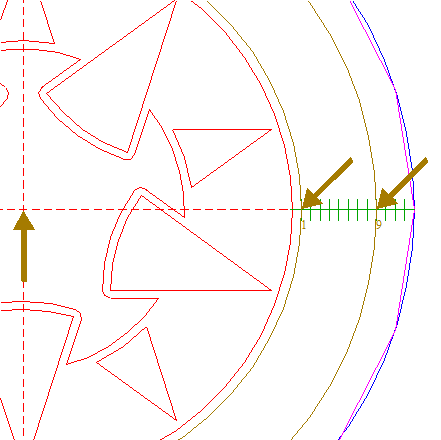
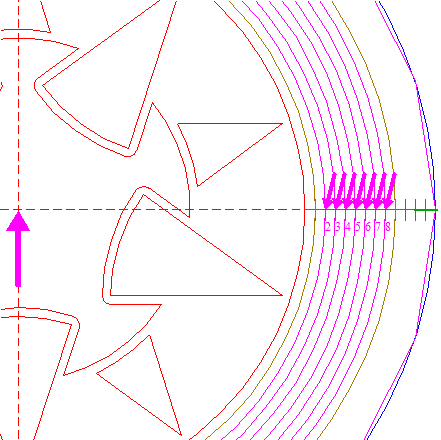
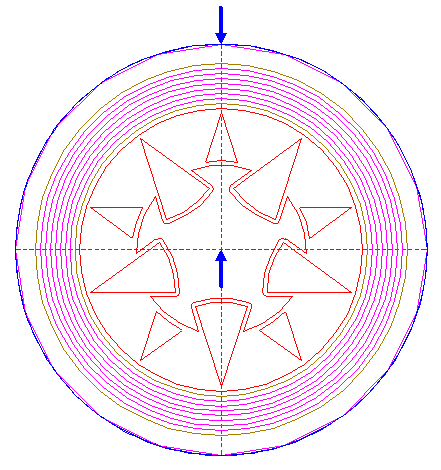
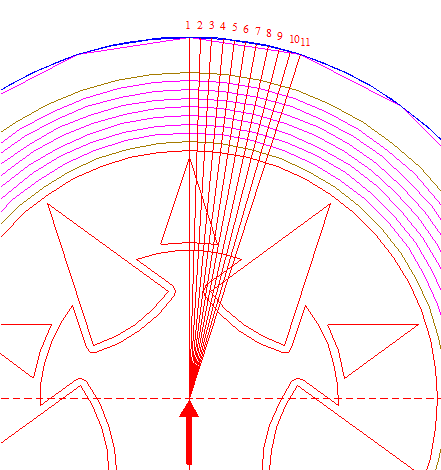
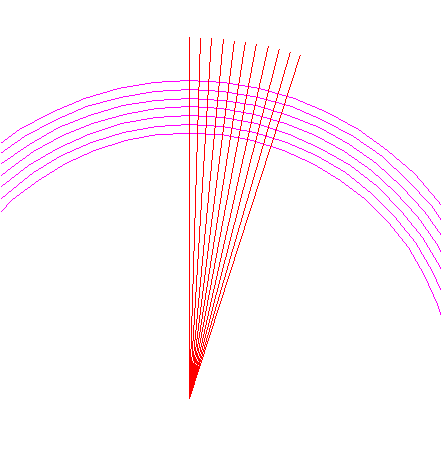
...this pattern remains.


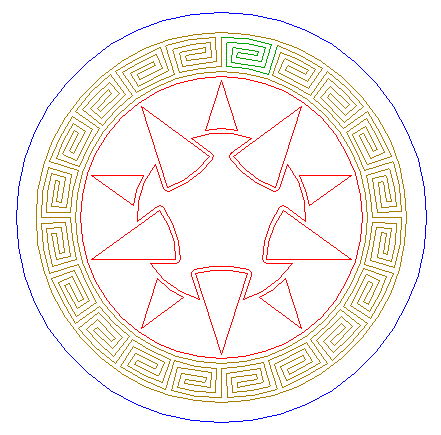


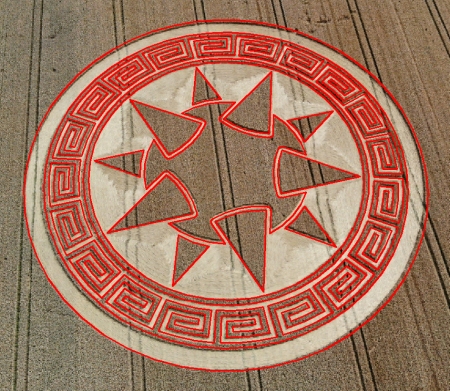
|
Reconstruction of the 2025 Frieding (Germany) formation | ||
| 1. | 
| Draw a circle. Draw the horizontal and vertical centerlines. |
| 2. | 
| Draw the connecting line between the center of circle 1 and its upper intersection with the vertical centerline. |
| 3. | 
| Divide line 2 into three equal parts. |
| 4. | 
| Construct a circle concentric to circle 1, passing through upper division node 3. |
| 5. | 
| Construct the inscribed icosagon (regular 20-sided polygon) of circle 1, pointing up. |
| 6. | 
| Construct a circle centered at the lower angular point of icosagon 5, passing through its next angular point. |
| 7. | 
| Construct a circle concentric to circle 1, tangent to circle 6 at the upper side. |
| 8. | 
| Construct the inscribed pentagon (regular 5-sided polygon) of circle 4, pointing up. |
| 9. | 
| Construct the inscribed pentagram of pentagon 8 (its five diagonals together). |
| 10. | 
| Construct the inscribed pentagon of circle 4, pointing down. |
| 11. | 
| Construct the inscribed pentagram of pentagon 10. |
| 12. | 
| Construct a circle centered at the lower angular point of pentagram 11, passing through the lower internal intersection of pentagram 9. |
| 13. | 
| Copy circle 12 to the center of circle 1. |
| 14. | 
| Construct a circle concentric to circle 12, tangent to circle 7 at the lower side. |
| 15. | 
| Copy circle 14 to the upper intersection of circle 12 and the vertical centerline. |
| 16. | 
| Construct a circle concentric to circle 12, tangent to circle 15 at the upper side. |
| 17. | 
| Copy circle 14 two times, to the intersections of circle 12 and pentagram 11. |
| 18. | 
| Construct two lines, parallel to the lower sides of pentagram 11, tangent to circles 14 and 17 at the outer sides, as shown. |
| 19. | 
| Copy and rotate circles 12, 16, and 17, and lines 18, as a whole, four times, with respect to the other angular points of pentagram 11. |
| 20. | 
| Construct the circumscribed decagon (regular 10-sided polygon) of circle 13, pointing up. |
| 21. | 
| Construct the circumscribed circle of decagon 20. |
| 22. | 
| Remove all redundant parts from pentagrams 9, and 11, from circles 12, 13, 16, 17, 19, and 21, and from lines 18, such that... ...this pattern remains. |

| ||
| 23. | 
| Draw the connecting line between the righthand intersections of circles 7 and 1 with the horizontal centerline. Divide this line into thirteen equal parts, and number the division nodes 1 - 12, from left to right. |
| 24. | 
| Construct two circles concentric to circle 1, passing through division nodes 23 nrs. 1 and 9. |
| 25. | 
| Construct seven circles concentric to circle 1, passing through division nodes 23 nrs. 2, 3, 4, 5, 6, 7, and 8. |
| 26. | 
| Construct the inscribed regular 200-sided polygon of circle 1, pointing up. |
| 27. | 
| Draw the first eleven rays of polygon 26, from the center to the consecutive angular points, counted clockwise, starting at the top, as shown. |
| 28. | 
| Remove all redundant parts from circles 25 and lines 27, such that... ...this pattern remains. |

| ||
| 29. | 
| Repeat all necessary steps to copy and rotate pattern 28 nineteen times, with respect to the other angular points of icosagon 5. |
| 30. | 
| Circles 1, 7, and 24, and patterns 22, 28, and 29, together, make up the final reconstruction. |
| 31. | 
| Colour all areas corresponding to standing... |
| 32. | 
| ...or to flattened crop, and finish the reconstruction of the 2025 Frieding (Germany) formation. |
| 33. | 
| The final result, matched with the aerial image. |
| Copyright © 2025, Zef Damen, The Netherlands |
|
|
||